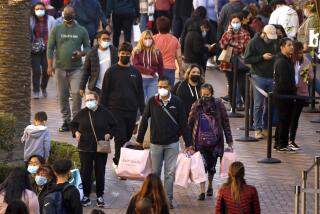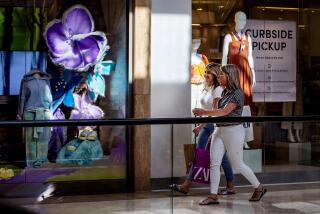Reopening California off to a slow start as customers stay away, fears of coronavirus still loom large
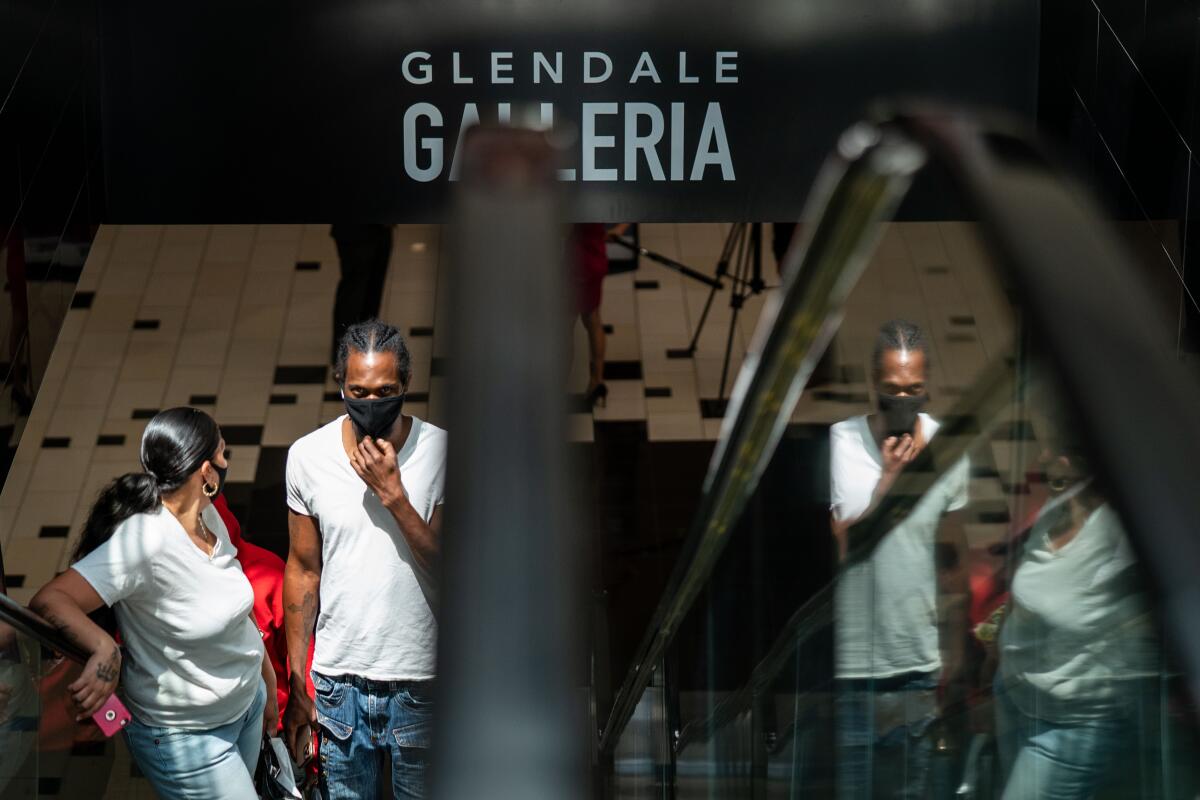
When the email alert landed in her inbox Wednesday night, Christine Parsons knew exactly what she would do the very next morning: head to the mall, the Glendale Galleria to be exact.
The electronic missive announced that the huge shopping center would reopen Thursday after a long coronavirus nap. Parsons had been sitting for a month on a bag of unwanted merchandise she’d bought online, and she wanted to return it in person at PacSun, a beachy clothier that trades on California chic.
But when she got to the shop, the door was locked, clothing was scattered on the floor inside, and a note was taped to the glass, the kind of announcement seen at stores mallwide: “Right now, our plan is to re-open our stores on Sunday, March 29th, but the situation is evolving and this may change.”
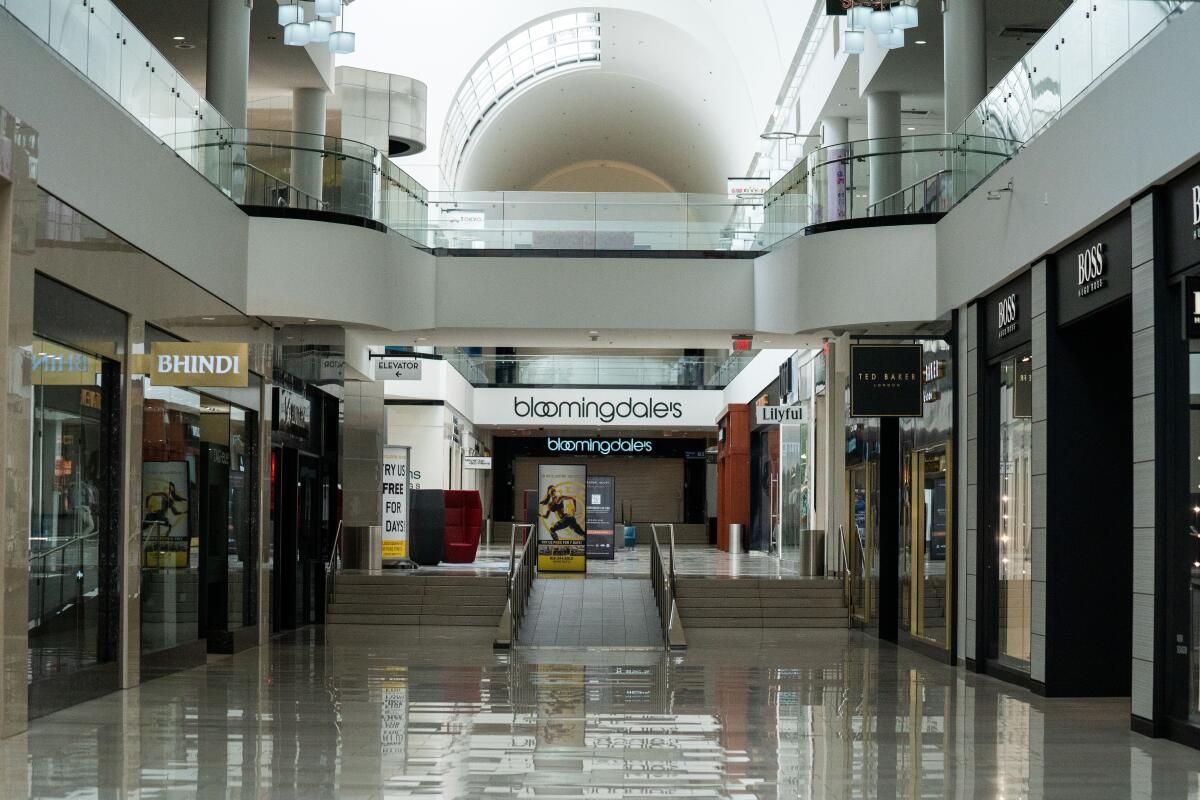
Now there’s an understatement. When the mall opened at 11 a.m., 90% or so of its retail outlets were not ready to reopen; according to the Glendale Galleria website, only 19 of the 198 shops were back in business, one day after the Los Angeles County Department of Health allowed malls, retail stores, faith-based services and drive-in movies to resume business.
In fact, most major malls across the county — and a fair number of smaller, independent shops as well — were still closed on Wednesday and Thursday. And those that were open were far from jammed with customers.
The slow start underscores the peril facing the region’s economy and the difficult choice facing retailers, employees and consumers alike: If stores are full, the pandemic could worsen. If they’re empty, there goes the economy.
On Thursday, you could buy a soft pretzel, a diamond ring or a Double-Double at the Glendale Galleria. But you couldn’t browse the makeup counter at Bloomingdale’s or get your cranky iPhone fixed at the Apple store. And you most certainly couldn’t return goods you didn’t like at PacSun.
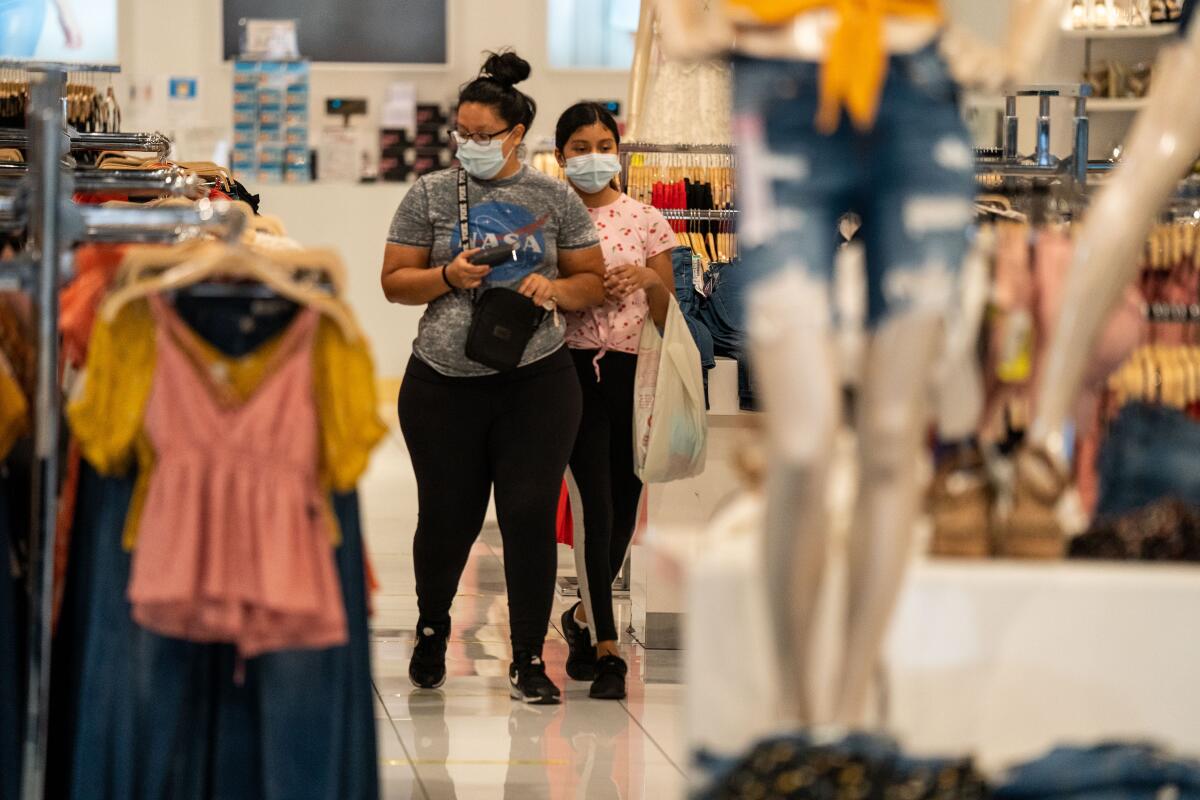
“I don’t understand how this store is closed, but the stores across the hall are open,” said Parsons, a 29-year-old Los Angeles County resident who works at Chobani. “If you travel outside of L.A., it’s a whole different reality. It’s like coronavirus doesn’t exist.”
The novel coronavirus certainly exists here. Los Angeles County has recorded 49,860 confirmed cases of COVID-19 as of Thursday, and 2,241 people have died here from the virus. That’s a much higher toll than any other county in the state, but then Los Angeles is also the most populous state’s most populous county.
The virus pushed unemployment in the county to 20.3% in April, the highest rate of any big, urban area in the state; in that month alone, Los Angeles County lost 691,300 jobs. The state lost 2.3 million jobs in April, according to the California Employment Development Department, which called the job loss “unprecedented” and “a direct result of the impacts of the COVID-19 pandemic.”
That pain has rippled out into malls and stores throughout the region.
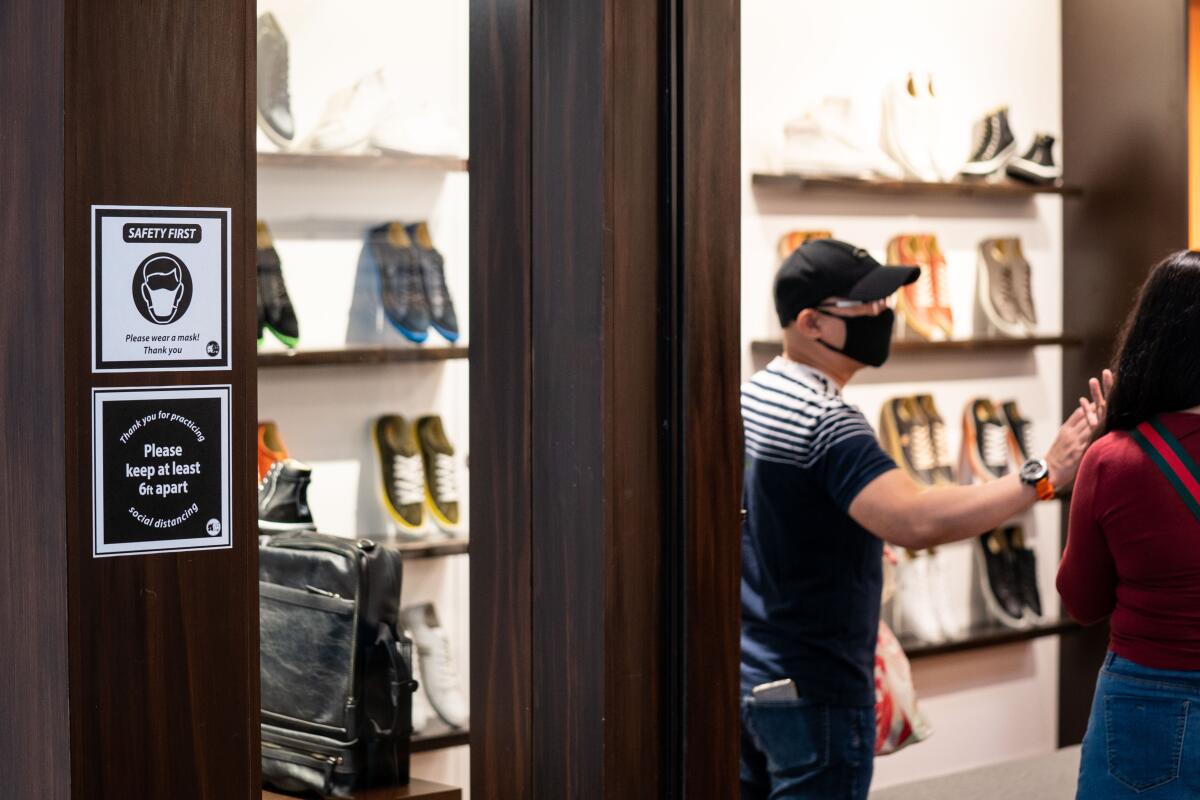
Major malls such as the Del Amo Fashion Center in Torrance, the SouthBay Pavilion in Carson and the Beverly Center in Los Angeles all were closed Thursday, except for essential services such as restaurant takeout and delivery and some curbside pickup. Some stores at the Beverly Center plan to reopen Friday.
Baldwin Hills Crenshaw mall’s website said it would be “open today 0:00.” Along with the Shops at Montebello’s closure notice, the mall’s website exhorted consumers to “#FLATTENTHECURVE.”
The Westfield Century City mall plans to reopen Saturday, but five of the company’s other shopping centers — in Culver City, Valencia, Sherman Oaks, Arcadia and Canoga Park — will remain closed until Wednesday. When they do come back, the malls will offer a package of new digital services, which will allow customers to shop by appointment and check foot traffic at the mall in real time before heading out to browse.
Bill Allen, chief executive of the Los Angeles County Economic Development Corp., said he thinks retailers and mall operators are “taking appropriate time to make sure the experience is safe and pleasurable for consumers. Because the retail experience is everything today.”
But he also worries about the impact of a sluggish restart.
“The majority of our economy is driven by consumers. If consumers don’t have the ability or interest to get out and shop, it will limit the economic recovery,” Allen said. “That will limit reemployment. It will limit spending. It will limit taxes paid to local government. And that limits government’s ability to provide services.”
The Citadel Outlets in Commerce, which also reopened Thursday, didn’t give much cause for hope. Only 25 stores out of 130 opened their doors in a mellow first step back for the Assyrian-style icon along the 5 Freeway.
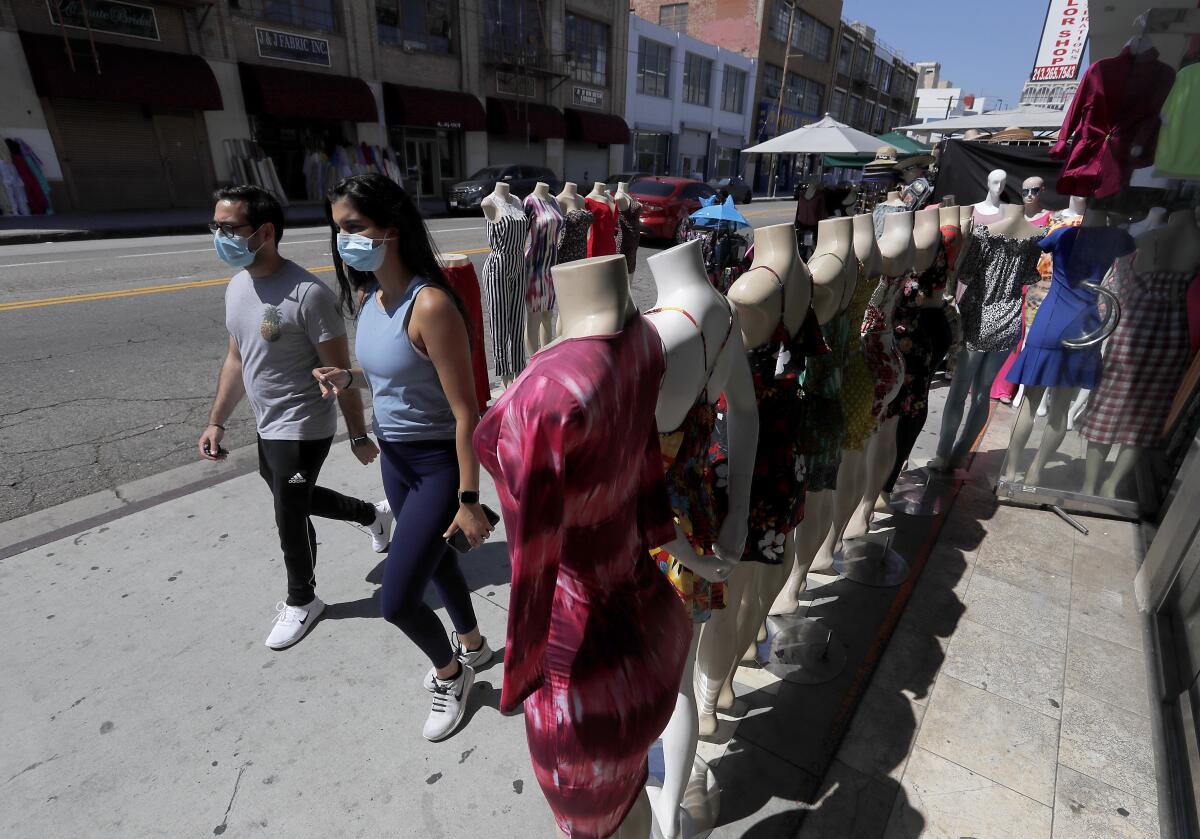
The parking structure was almost empty and the scattered crowds left plenty of room for people to maintain more than the recommended six feet of separation. Almost everyone — adults and children alike — wore masks. Short lines appeared at several storefronts, but wait times seldom exceeded 10 minutes.
Citadel general manager David Blagg said the decision whether to open was left up to individual tenants, mostly national chains making plans on a regional scale. None had notified him that they did not intend to reopen. Several said they were trying to figure out how to keep customers far enough apart, while others were having trouble getting staff to return.
The dearth of stores and lack of choice were a disappointment for Octavio Acevedo and his daughter Dana, who waited in line outside Papaya, a clothing store that caters to the fashionable young.
Still, Acevedo conceded, “It’s better to be here than home.”
They got into Papaya after a 10-minute wait. Dana left with a dress and sweater.
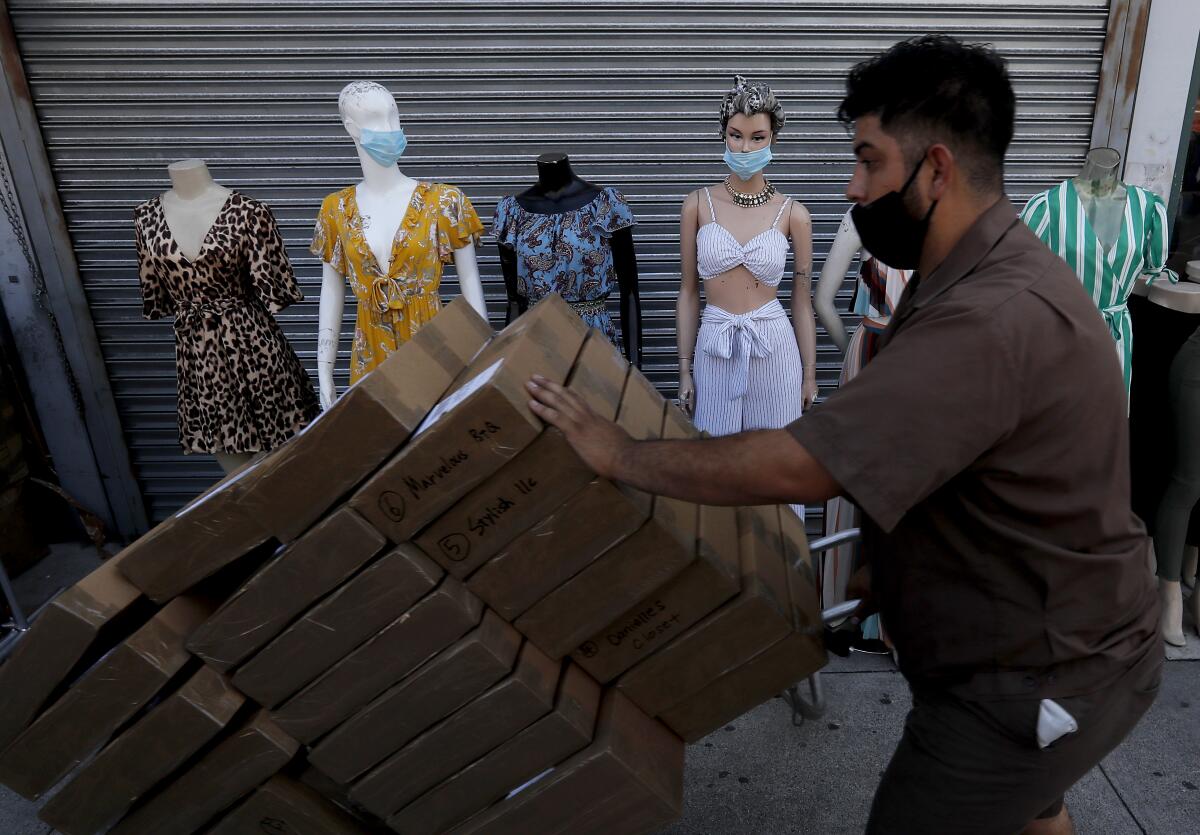
Outside of the county’s major malls, at independent businesses that don’t wait for orders from a corporate office, the picture wasn’t any rosier.
The retail vacancy rate in beleaguered Westwood Village was a dismal 22% before the pandemic, Andrew Thomas, executive director of the Westwood Village Improvement Assn., said Wednesday. Thomas expects that to nearly double, because it’s still unclear whether UCLA students will be able to return in the fall.
And upcoming construction of the Metro Purple Line subway extension will only make matters worse in the neighborhood, where many streets have “for lease” signs posted.
“Business is not going to be dictated by a faucet,” Thomas said. “You can’t just bring all of the customers back and pour into the Village. It’s going to take time for people to feel safe. And businesses are going to have to hang in there until people have that comfort level. And that’s going to be very difficult.”
On Wednesday, the first day the county had loosened shelter-at-home directives, Highland Park’s trendy York Boulevard was hit and miss. “Essential businesses,” such as the upscale coffee shops and traditional mom-and-pop markets, had been open throughout the pandemic. But many boutiques and specialty shops remained dark.
The doors at vintage clothing shops, gift stores, art retailers and bookstores were barred, chained or boarded up Wednesday, sporting a variety of outdated signs about when — or if — they would reopen.
There are three party supply stores within a block and a half of York and North Avenue 50. But on Wednesday, only Junior’s Discount Shop was open.
“Nobody has come in, but we have to open, we have to try,” said owner Silvia Flores, 51, whose store previously offered curbside pickup. “I was hoping for more people.”
Junior’s sells clothing and knickknacks, paper products and party decorations. Signs warn customers to wear masks and maintain social distancing. Flores said she also would be on the lookout to make sure her store didn’t get too crowded.
Wednesday, that was not an issue.
“I think people are scared,” said Flores, who wore a protective mask and pushed aside her own fears of the deadly disease for one simple reason: She can’t afford to stay closed any longer.
“The virus is out there, but so is the electric bill, so is the rent, so is my insurance,” she said. “If we stay closed, this store will die.”
More to Read
Sign up for Essential California
The most important California stories and recommendations in your inbox every morning.
You may occasionally receive promotional content from the Los Angeles Times.


